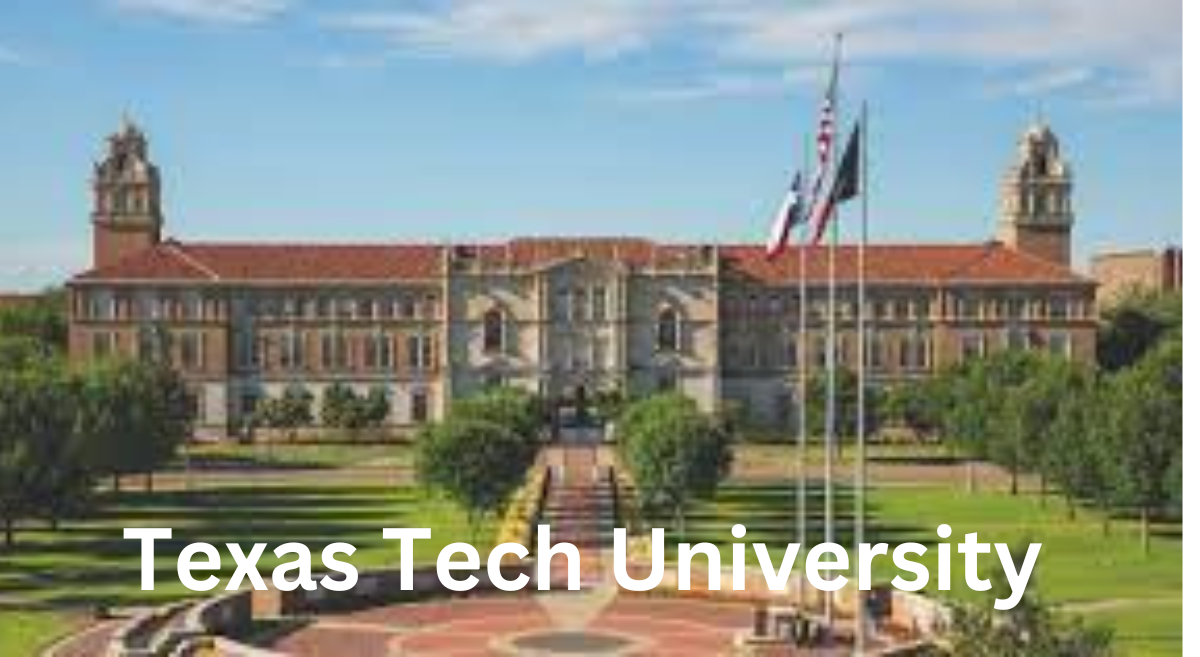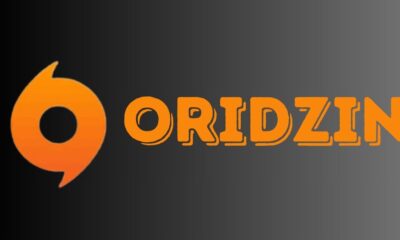Education
Smoothstack Lawsuit Unveiled: Navigating the Legal Turbulence

Legal issues are frequently complex and unpredictable in the fast-paced world of technology. The tech world has been talking a lot lately about a case that involves one of the major companies in the market, Smoothstack. It’s important to comprehend the confusing nature of legal nuances and the burstiness that characterizes the legal landscape in the tech sector before getting into the specifics.
Defining Smoothstack Lawsuit
“Smoothstack lawsuit” describes the legal action taken against Smoothstack, a business recognized for its cutting-edge technological solutions. This page seeks to clarify the current situation by providing details on the lawsuit’s nature, possible outcomes, and wider ramifications for the tech sector.
Smoothstack Background
One of the major names in the tech sector, Smoothstack, has won praise for its innovative offerings and dedication to technology progress. But subsequent occurrences have damaged the company’s image, which has prompted an investigation into its past and the circumstances that led to the legal situation.
Overview of Smoothstack
Smoothstack has been a top option for companies looking for cutting-edge solutions since its founding with the goal of revolutionizing the tech industry. The company offers a broad range of tech-related services, including IT consulting and software development.
Mission and Services
The fundamental goal of Smoothstack is to enable organizations to prosper in the digital age by offering superior tech solutions. Their assistance has been crucial in assisting customers in navigating the intricacies of the tech industry.
Factors Leading to the Lawsuit
Despite its success, Smoothstack is now embroiled in a litigation that has industry watchers scratching their heads. To fully comprehend the gravity of the situation, one must be familiar with the details of the accusations and the complexities of the law.
Nature of the Lawsuit
Allegations and Legal Issues
If the claims made in the lawsuit against Smoothstack are correct, it can have a major impact on the business. Important legal concerns central to the case include [certain legal concerns].
Parties Involved
Determining who is at fault in a legal dispute is an essential first step. The [insert names of parties here] are all playing important roles in the current drama that is the Smoothstack case.
Timeline of Events
Unraveling the Legal Drama
In order to understand how the Smoothstack litigation has developed, it is necessary to know what happened before this point. The timeline lays down the major events and developments in the case in chronological order.
Milestones in the Lawsuit
A number of significant events have occurred along the course of the litigation against Smoothstack. Both the court fight and the company’s reputation have been affected by these developments.
Impact on Smoothstack’s Reputation
The tech community was rocked by the news of the lawsuit as soon as it leaked. The years-long effort to establish Smoothstack’s reputation is now at risk. Questions over the company’s survival have arisen as a result of the substantial influence on public perception of the business.
Legal Analysis
Deconstructing Legal Arguments
The seriousness of the Smoothstack case may only be understood by consulting an exhaustive legal evaluation. This section explores the particular legal arguments put out, possible outcomes for Smoothstack, and any applicable precedents or cases that could impact the decision..
Examination of Legal Arguments
Herein rest the meat and potatoes of the case. You need a sophisticated grasp of [relevant legal principles] to analyse their arguments. Both sides’ cases have had legal experts comment on their merits and shortcomings.
Potential Consequences for Smoothstack
Smoothstack might encounter [possible repercussions], including monetary fines and harm to its reputation, in the case of a negative result. Avoiding these traps calls for a well-planned legal strategy.
Precedents and Relevant Cases
When deciding the result of a litigation, legal precedents are quite important. Possible future legal paths can be better understood by looking at similar cases to the Smoothstack lawsuit.
Public Reaction
Social Media Echoes
The Smoothstack lawsuit, like many others in the modern era of social media, has far-reaching consequences. This section delves into the public’s emotions, the viewpoints of industry stakeholders, and the reactions on social media platforms.
Social Media Responses
Many people’s reactions on various social media sites were triggered by the announcement of the lawsuit. Discourse on the internet ranges from outrage to demands for responsibility and reflects
Education
ùmap: A Comprehensive Guide to Visualizing Information

What is ÙMap?
The essence of a ÙMap is a graphical depiction of information, ideas, or procedures. With nodes standing in for various components and their connections, it employs a hierarchical framework to arrange data. This style is highly beneficial in many disciplines, including education, project management, and strategic planning, since it facilitates easy navigation and comprehension of complicated subjects.
Importance of ÙMap
Maps’ value is in the way they simplify data and make it easier to understand. In order to improve understanding and decision-making, ÙMaps display data in a visually attractive and organized way. Maps provide a plethora of advantages, whether they are utilized for ideation sessions, presentations, or strategic research.
How to Create a ÙMap
An easy way to start making a ÙMap is to figure out what the major subject or theme is. Users are then able to build upon the main idea by adding branches and sub-branches. To make it easier to create maps, there are a number of software applications and internet platforms that include features like configurable templates and drag-and-drop capability.
Key Components of a ÙMap
Usually, a few essential parts make up a well-designed ̙Map, such as:
Theme or primary emphasis
The branches stand for the main concepts or groups.
Branches that go into further depth on certain subjects
Relationships between related parts
Visual aids that improve legibility, including pictures, symbols, and colors
Examples of ÙMaps
Here are a few examples to show how versatile ̓maps may be:
Project Management: Team members can better understand the project’s scope and interdependencies with the use of a ̓map that outlines project goals, tasks, and due dates.
Education:Instructors may arrange course resources, lesson plans, and learning goals using ÙMaps, giving students an easy way to find their way around in class.
Strategic Planning: Market trends, competitive landscapes, and growth possibilities may be better understood by business executives using ̙maps, which can then be used to generate strategic initiatives.
Common Mistakes to Avoid When Creating a ÙMap
Although ̙Maps provide several advantages, it is important to steer clear of typical mistakes:
When there is an excess of data on a single map, it can be confusing and difficult to understand.
Misunderstandings about the interrelationships of various components could arise from a lack of a defined hierarchy.
It is crucial to pay attention to the visual appeal of a map since bad design decisions might reduce its usefulness.
Best Practices for Designing an Effective ÙMap
Take into account these excellent techniques to make a map that makes a big splash:
Get the ball rolling with a well-defined goal and framework.
When labeling nodes and branches, make sure they are brief and informative.
Make things more organized and easier to understand by using color coding and other visual signals.
Keep the ̓map up-to-date by reviewing it often and making any necessary modifications or additions.
Tools for Creating ÙMaps
There are several software programs and platforms that may be used to create ÓMaps, such as:
Brainstorm, XMind, Coggle, Lucidchart, and FreeMind
To accommodate a wide variety of requirements and tastes, these tools provide a wide array of features and functions.
Using ÙMaps for Planning and Decision Making
Maps aren’t just useful for organizing data; they may also aid in planning and decision making. Users may more confidently and efficiently establish plans, recognize opportunities, and evaluate risks by visualizing links and dependencies.
Benefits of Digital ÙMaps
- Although there is a use for traditional paper-based ÙMaps, digital ÙMaps have several benefits, such as:Accessibility: Any location with an internet connection may see and make changes to digital maps.
Teamwork and the exchange of ideas are both enhanced by the ability for several individuals to work together in real-time on an online platform.
Connectivity: Other software tools and platforms may be seamlessly integrated with digital ÙMaps, improving their overall functionality.
Future Trends in Mapping
The discipline of ̙mapping will also undergo continuous evolution in tandem with technology. Keep an eye on these new trends:
Artificial Intelligence: Algorithms driven by AI might provide fresh perspectives and skills for creating and evaluating ̙maps.
Augmented Reality (AR) technology has the potential to transform the way people engage with geographical data by allowing for more immersive and interactive mapping experiences.
Data Visualization: Improvements in methods for displaying data visually might result in ÓMap presentations that are more adaptable and personalized, which would increase user involvement and comprehension.
Conclusion
Maps are helpful for arranging data, making things more clear, and making decisions easier. Maps have several uses and may be made using many software programs and platforms; they are useful in project management, teaching, and planning for the future. To reach their aims and objectives, users may get the most out of ̓Maps by adhering to best practices and keeping themselves updated about new trends.
FAQ’s
What is the difference between a ÙMap and a traditional outline?
Although both help to arrange data, conventional outlines are usually text-based and linear, whereas maps provide a visual depiction with linked nodes.
Can ÙMaps be used for personal organization and goal setting?
Sure thing! In both their personal and professional lives, a lot of people utilize ̓Maps for task management, progress tracking, and goal setting.
Are there any free options for creating ÙMaps?
Users with different requirements and budgets can choose an online platform that suits them, because many of them provide free versions with limited functionality.
How can I learn more about advanced ÙMapping techniques?
To learn more about ̙Mapping and information visualization, you might want to look at online tutorials, seminars, and community forums.
What are some creative ways to use ÙMaps in marketing and content creation?
Among other uses, marketers may utilize ̓Maps to create content calendars, plot customer journeys, and generate campaign ideas.
Education
2023 – 1954: A Journey Through Time

There are two separate eras in history, 2024 and 1954, and each has its own unique history of achievements, setbacks, and changes. It is clear that the world has changed drastically, affecting every facet of human life, as we begin our journey through time.
Introduction
Invoking the year 1954 brings up fond memories of a bygone era characterized by post-war rebuilding, the ascension to stardom of Elvis Presley, and the early stages of the Cold War. In 2023, the digital age and globalization have molded a technologically evolved landscape.
Technological Evolution: A Leap from 1954 to 2023
From the rotary phone period to the smartphone and AI era, there have been tremendous technological breakthroughs. Unveiled in 1954, UNIVAC I was the first commercially successful computer. The advent of quantum computing and hitherto unseen levels of connection are both within reach now.
Cultural Shifts: Then and Now
In contrast to the discrimination and homogeneity of the 1950s, the year 2023 is all about acceptance and diversity. A rich mosaic of viewpoints has emerged as a result of cultural transformations, on a worldwide scale, where traditions interweave with contemporary ideals.
Economic Transformations Over the Decades
Reconstruction efforts following World War II defined the economic climate in 1954. The world economy in 2023, on the other hand, is booming thanks to technological advancements.
Political Landscape: 1954 vs. 2023
In 1954, the Cold War dominated geopolitical dynamics; in 2023, new threats like climate change and cyberattacks will complicate the already intricate web of global power dynamics.
Global Events: From the Past to the Present
Historical events have been influenced by global events, such as the 1954 Geneva Accords and the problems of the modern era. To make sense of the present, we need to know what came before.
Environmental Changes: Then and Now
From the industrial revolution of 1954 to the pressing demands for sustainability in the year 2023, environmental consciousness has progressed. For a more sustainable future, we must rise to the challenges of the present.
Social Movements: Then and Now
Modern social justice movements can trace their roots back to the civil rights struggles of the 1950s. Human rights and equality remain contentious topics in 2023 society.
Scientific Achievements Across Eras
Science has catapulted us into an age of boundless potential, beginning with the 1954 structure of DNA discovery and continuing with modern advances in genetic engineering.
Health and Medical Advancements
Innovations such as the polio vaccine were made possible by medical breakthroughs in 1954. Personalized medicine and innovative treatments make significant strides in 2023.
Educational Paradigm Shifts
Digital classrooms and online learning platforms of 2023 stand in sharp contrast to the one-room schoolhouses of 1954. As both society and technology advance, so too does the way education is structured and delivered.
Communication Revolution: Then and Now
In 1954, people had to rely on letters and landline phones to communicate; in 2023, though, people all over the world are instantly connected through social media and other advanced communication technologies.
Entertainment Industry Evolution
The entertainment industry has transformed from making black-and-white movies to creating immersive VR experiences. Our content consumption and production habits have transformed over the years.
Challenges Faced and Overcome
Resilience was shown in the face of economic, political, and social difficulties in 1954. In 2023, we encounter fresh obstacles, but we are prepared to tackle a dynamic world thanks to the knowledge we gained from our experiences.
Conclusion
Both 2023 and 1954 are significant years in the grand scheme of things because they mark turning points in human history. The contrast between the two periods emphasizes how knowledge acquired through overcoming obstacles has tempered the unrelenting advance of civilization. Looking back on our past and future reveals that the path is just as important as the final destination.
Frequently Asked Questions (FAQs)
How did technology evolve from 1954 to 2023?
The technological journey witnessed a shift from bulky computers to the era of artificial intelligence, quantum computing, and seamless global connectivity.
What were the major global events in 1954?
Key events include the Geneva Accords, the first successful kidney transplant, and the establishment of SEATO (Southeast
Education
Texas Tech University

Texas Tech University: A Hub of Excellence and Tradition
Texas Tech University stands as a beacon of higher education, drawing students from across the globe to its enriching academic environment. Choosing the right university is a pivotal decision, and Texas Tech’s distinguished history and commitment to excellence make it a compelling choice for prospective students.
History and Legacy
Founded in 1923, Texas Tech University has grown into an institution of academic prowess and cultural significance. Notable alumni, including leaders in various fields, attest to the university’s commitment to producing exceptional individuals. From groundbreaking research to innovative discoveries, Texas Tech has carved a lasting legacy.
Academic Programs
One of the university’s strengths lies in its diverse array of undergraduate and graduate programs. From arts and sciences to engineering and business, Texas Tech offers comprehensive education, preparing students for success in their chosen fields. Research opportunities further enhance the academic experience, allowing students to contribute to advancements in knowledge.
Campus Life
Beyond academics, Texas Tech fosters a vibrant campus life. A myriad of student organizations and clubs cater to diverse interests, creating a sense of community. The university’s commitment to holistic education is evident in the numerous recreational facilities and events that provide students with a well-rounded college experience.
Sports and Athletics
Texas Tech boasts an impressive sports culture, with notable achievements in collegiate athletics. The spirit and traditions surrounding sports events contribute to a sense of pride and unity among students. Whether it’s the roar of the crowd in the stadium or the intense competition on the field, Texas Tech’s sports scene is an integral part of campus life.
Technological Advancements
Embracing technological advancements, Texas Tech leads in innovation and research. The integration of cutting-edge technology enhances the learning experience, preparing students for the demands of the modern world. From virtual classrooms to state-of-the-art labs, the university’s commitment to technological excellence is unwavering.
Faculty and Staff
Behind the success of Texas Tech are its dedicated faculty members and supportive staff. Renowned experts in their fields, the faculty contributes not only to academic excellence but also to the mentorship and guidance of students. The university’s staff ensures a conducive learning environment, providing resources and assistance for students’ success.
Admission Process
Navigating the admission process is made transparent and accessible at Texas Tech. The requirements and application procedures are designed to welcome diverse and talented individuals. Prospective students can find tips and insights to make their application process smoother, ensuring a seamless transition to university life.
Scholarships and Financial Aid
Recognizing the financial aspect of education, Texas Tech offers various scholarships and financial aid programs. Merit-based scholarships and grants are available to deserving students, easing the burden of tuition costs. The university’s commitment to making education accessible is reflected in its generous financial assistance offerings.
Community Engagement
Texas Tech extends its influence beyond the campus, actively engaging with the local community. Social responsibility initiatives and community outreach programs exemplify the university’s commitment to making a positive impact. Students are encouraged to participate in these initiatives, fostering a sense of responsibility and global citizenship.
Alumni Network
The success stories of Texas Tech alumni speak volumes about the quality of education and networking opportunities available. The university’s alumni network provides a valuable resource for graduates, opening doors to career opportunities and mentorship. The sense of camaraderie among Texas Tech alumni is a testament to the lasting connections formed during their time at the university.
Diversity and Inclusion
Inclusivity is a cornerstone of Texas Tech’s ethos. The campus is a melting pot of cultures, fostering an environment where diversity is celebrated. Inclusive programs and initiatives ensure that every student feels welcome and supported, contributing to a rich and dynamic learning environment.
Challenges and Opportunities
Texas Tech acknowledges and addresses common challenges faced by students, constantly striving to improve the overall experience. The university sees challenges as opportunities for growth and development, emphasizing resilience and adaptability in the face of adversity.
Future Developments
Looking ahead, Texas Tech envisions a future marked by continued excellence and growth. Anticipated improvements and expansions aim to further elevate the university’s standing in the academic landscape. Prospective students can be confident in choosing Texas Tech as their gateway to a promising future.
Conclusion
In conclusion, Texas Tech University is more than an institution; it is a community dedicated to nurturing minds and fostering excellence. With a rich history, diverse programs, and a commitment to inclusivity, Texas Tech stands as a symbol of academic brilliance. Prospective students are not just choosing a university; they are choosing a transformative experience that will shape their future.
FAQs
- What makes Texas Tech University unique?
Texas Tech’s unique combination of academic excellence, vibrant campus life, and a commitment to inclusivity sets it apart.
- How can prospective students apply to Texas Tech?
The admission process is straightforward, with detailed requirements and procedures available on the official website.
- Are there scholarships available for students?
Yes, Texas Tech offers a range of scholarships and financial aid programs to support students in their academic journey.
- What sports are prominent at Texas Tech?
The university has a strong presence in various sports, with football and basketball being particularly popular among students and alumni.
- How does Texas Tech engage with the community?
Texas Tech actively participates in community engagement through various initiatives, promoting social responsibility among its students
-

 Business9 months ago
Business9 months agoCraigslist Pittsburgh: A Local Marketplace for Goods, Services, and Community Engagement
-

 Technology9 months ago
Technology9 months agoAmazons GPT 55X: A Revolutionary Leap in Artificial Intelligence
-

 Uncategorized9 months ago
Uncategorized9 months agoUnlocking Career Success with 92career: Embracing Adaptability and Lifelong Learning
-

 Technology9 months ago
Technology9 months agoIntroduction to auz100x
-

 General9 months ago
General9 months agochargomez1: Revolutionizing the Digital Sphere
-

 Entertainment9 months ago
Entertainment9 months agoiFunTV: Revolutionizing Your Entertainment Experience
-

 Technology9 months ago
Technology9 months agoExploring the World of InnoCams
-

 Health &Fitness9 months ago
Health &Fitness9 months agoOridzin: Unveiling the Marvels of this Natural Compound
